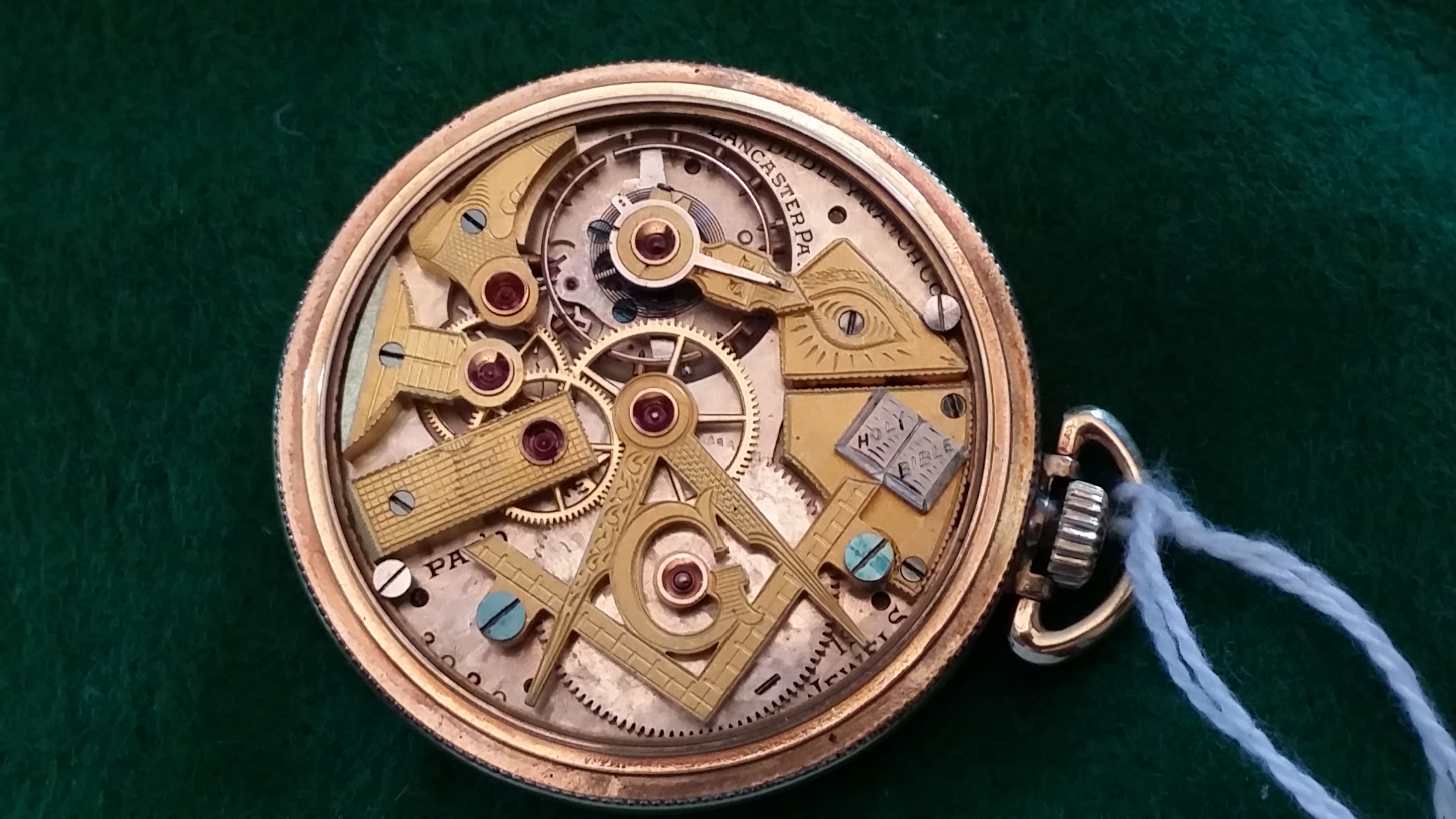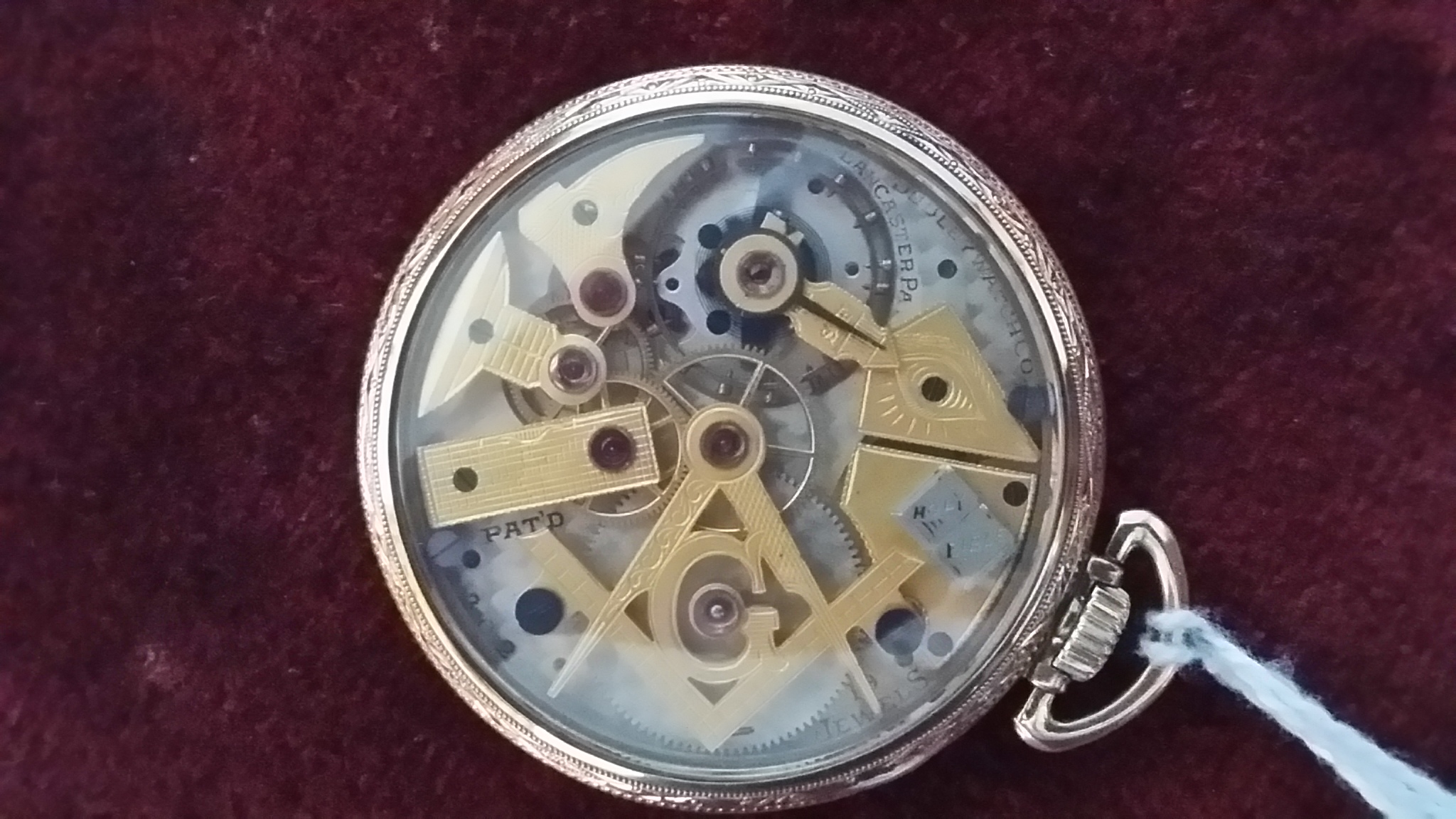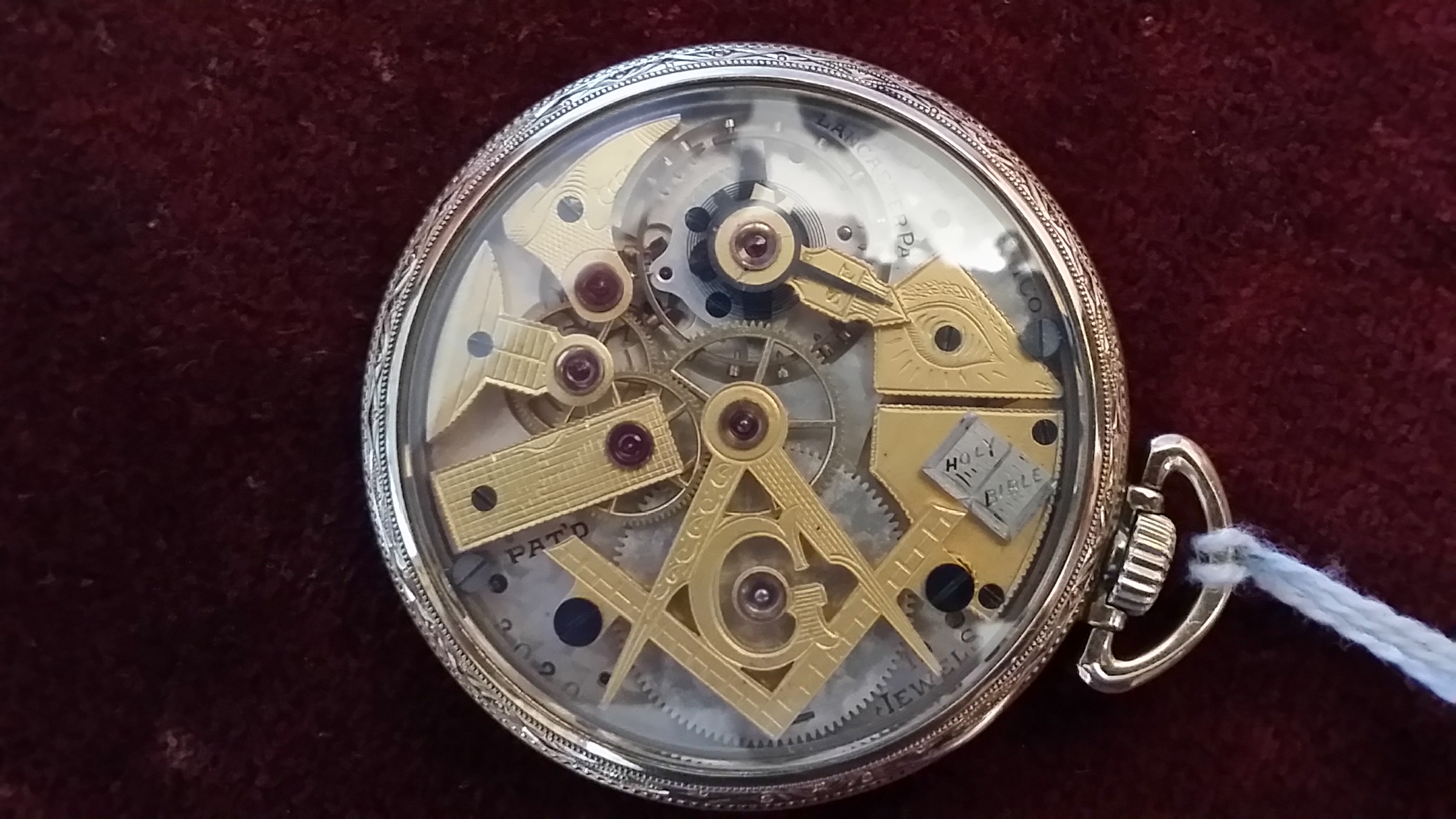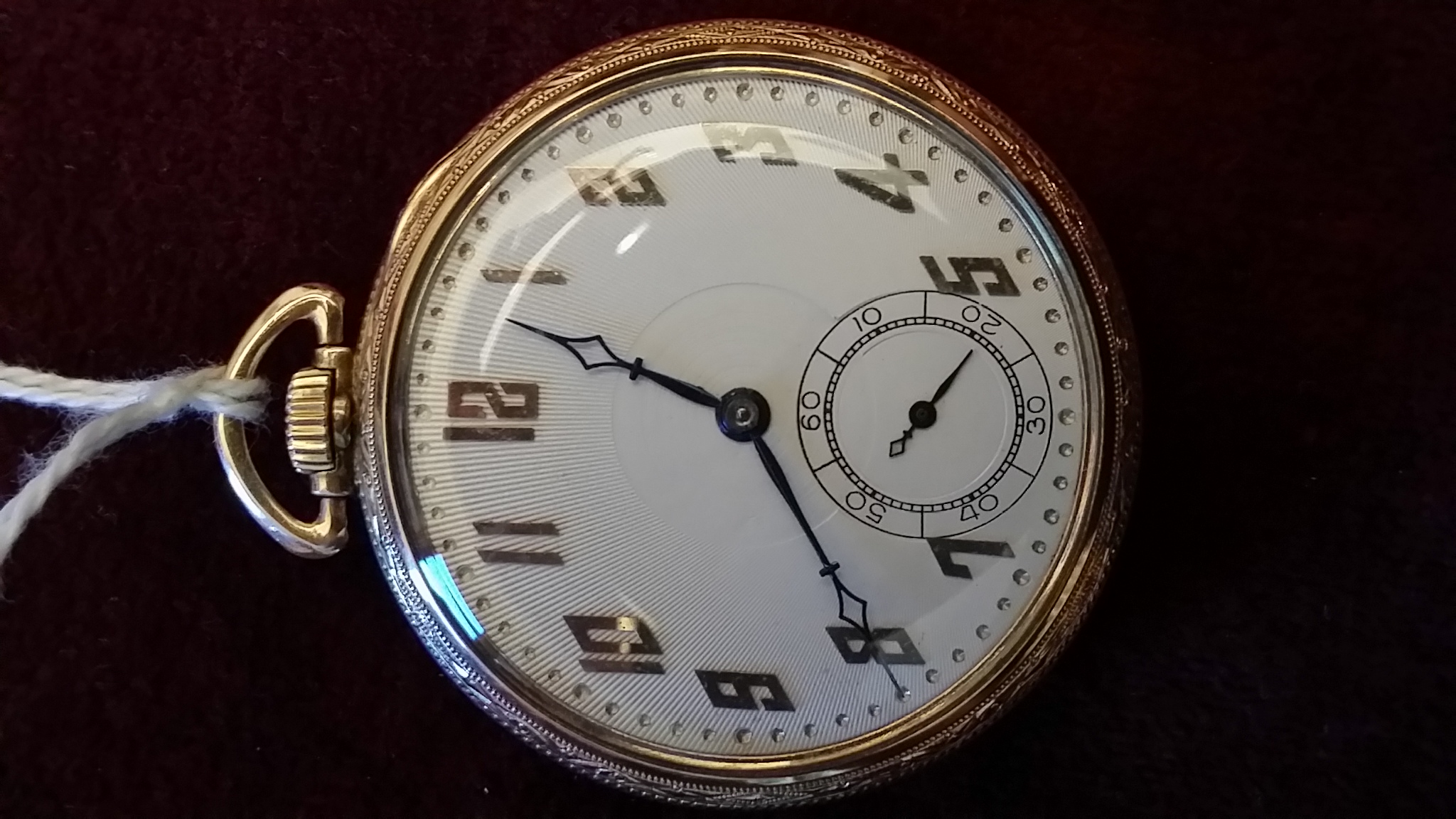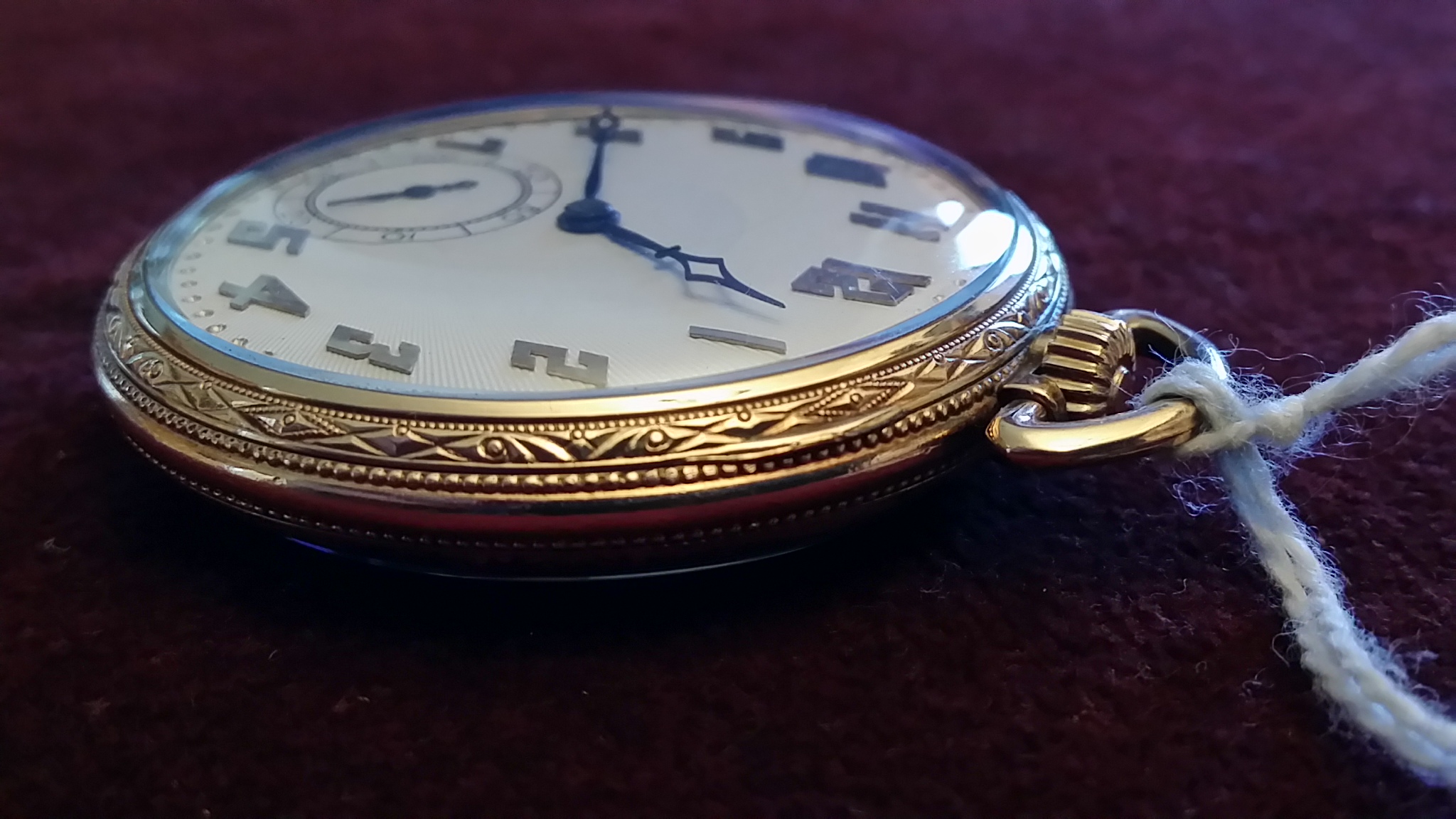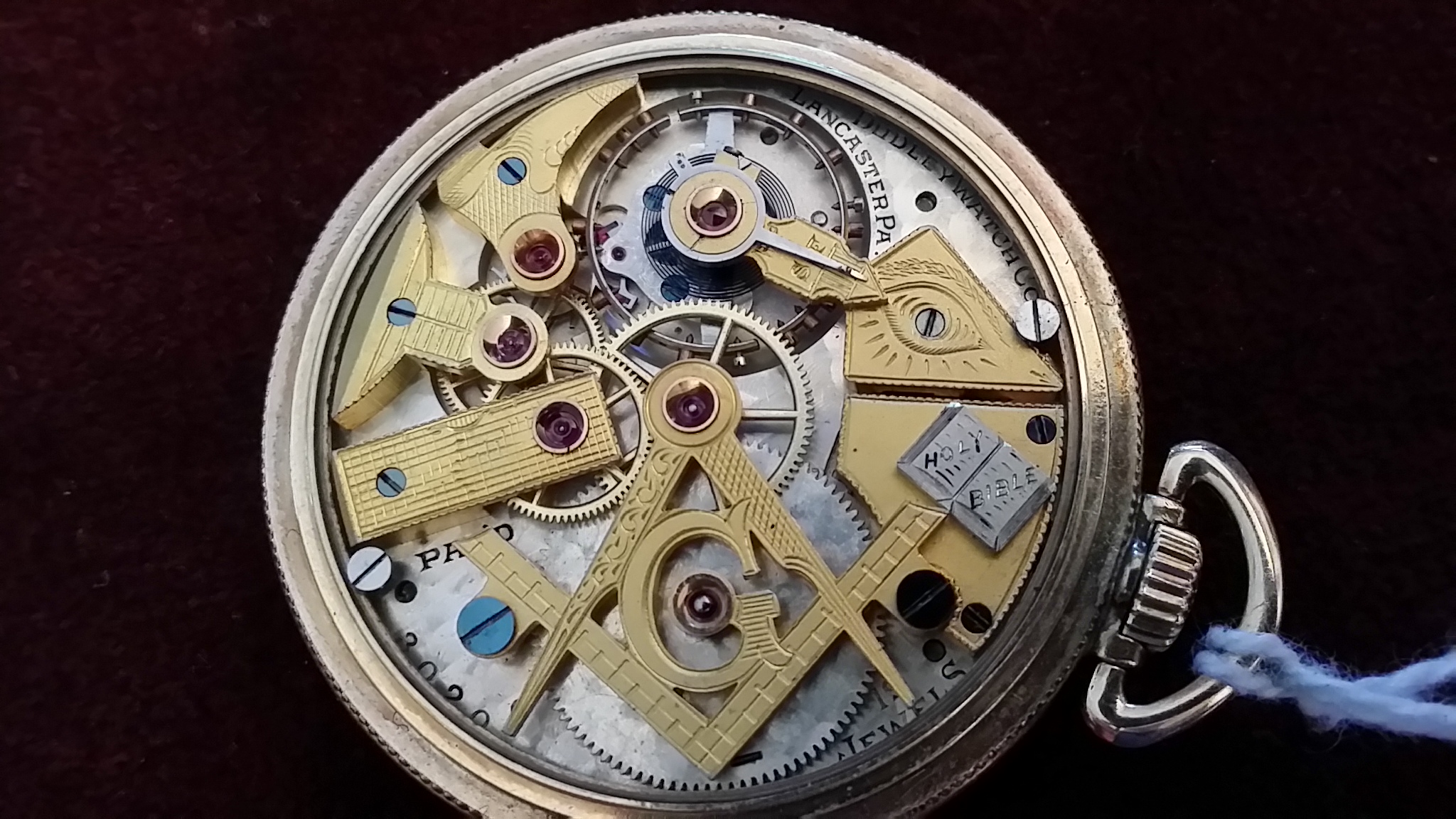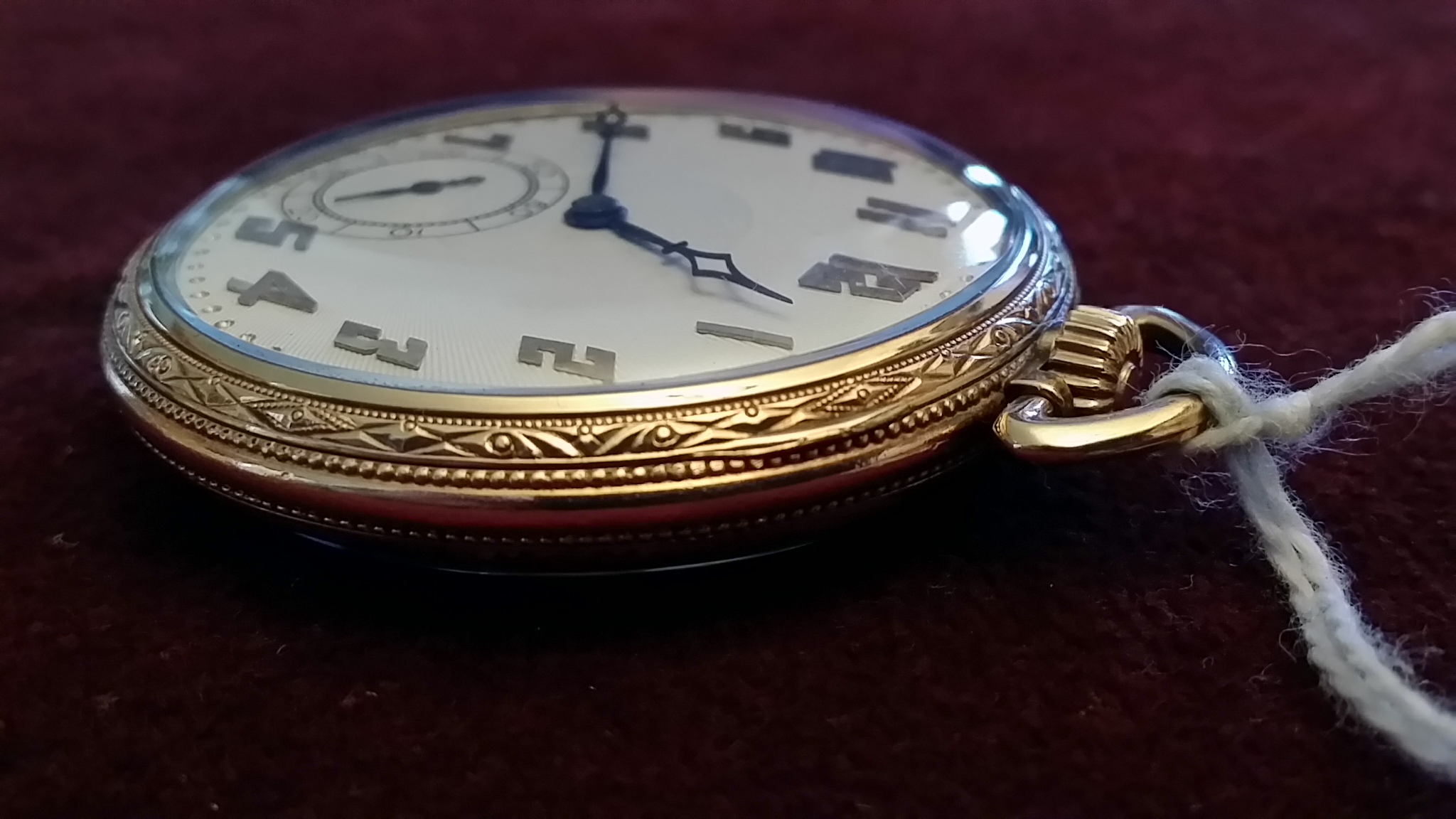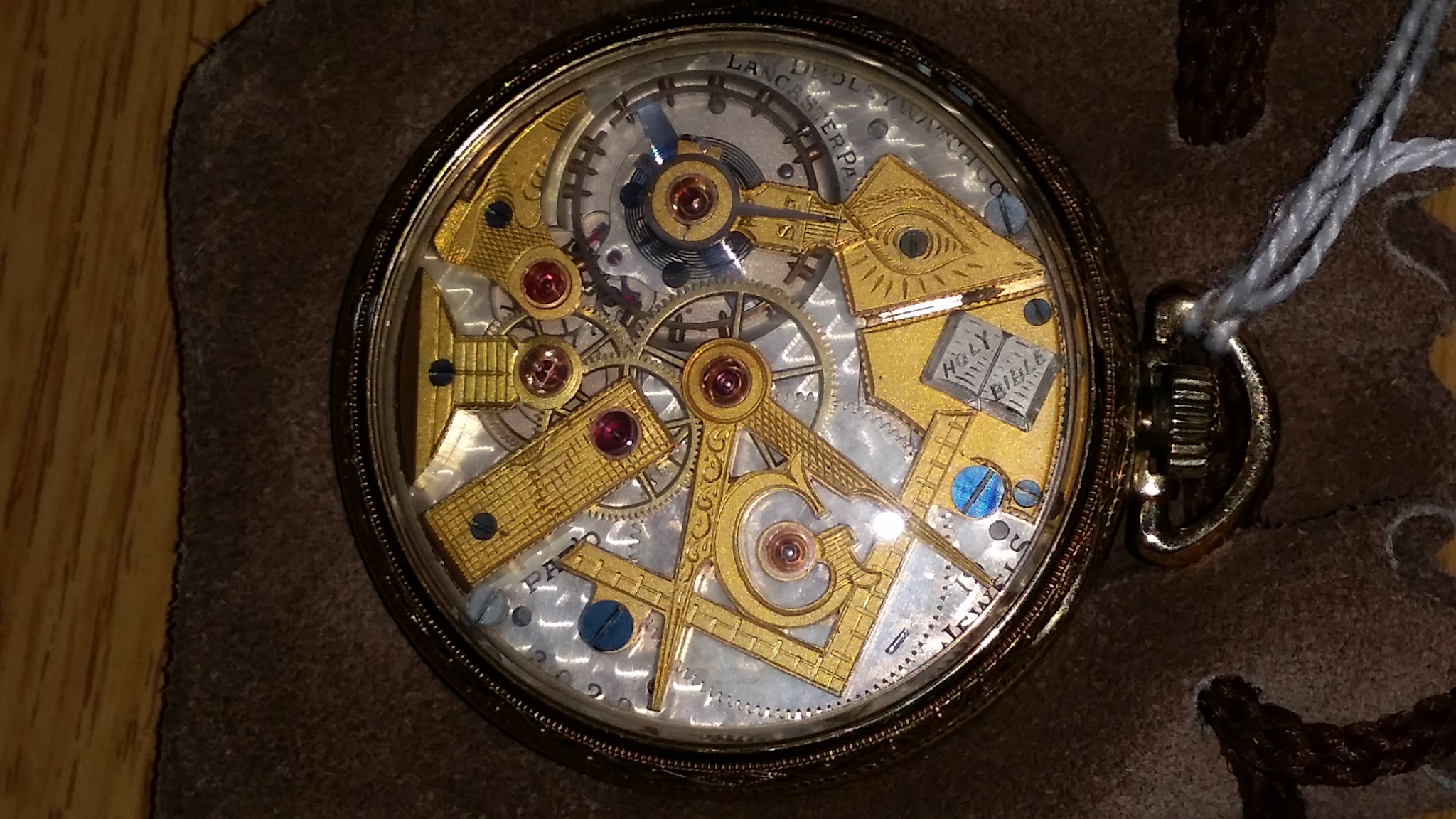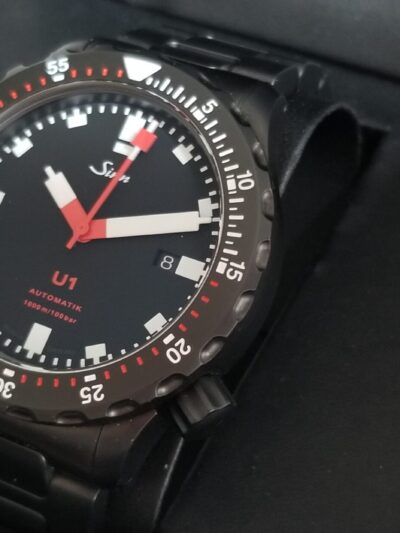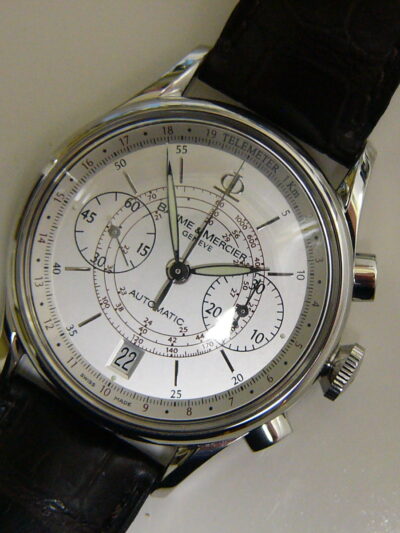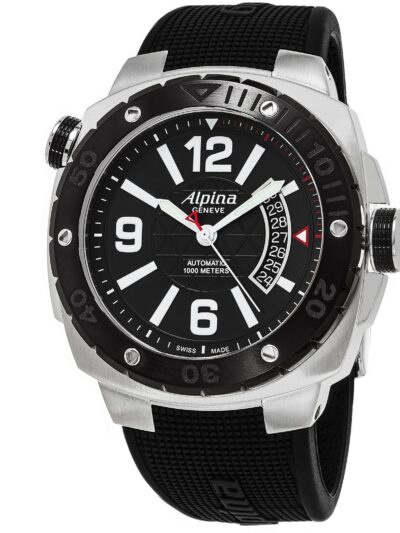Description
Rare Dudley Masonic Model 2 Display Case Pocket Watch — Masonic Pocket Watch. Circa 1925
Rare Dudley Model 2 Display Case Pocket Watch with sunburst radiant dial – All In Superb Condition
U.S./Pa.; Dudley Masonic; Man’s; Serial # 3020; Circa: 1920’s
CASE: The yellow gold or gold-filled 12-size oversized 44mm open face display case. We cannot make out any engraving even under magnification to ID case maker or composition…..appears original.
DIAL: This fancy silver dial has a radiant sunburst finish and applied markers. It is accompanied with blued steel open diamond hands and gold applied markers.
MOVT: The 19-jewel stem-set Serial No. 3020 gilt movement has a lever escapement, Masonic cutouts and signed “Dudley.”
C 2 (The case is in perfect condition)
D 2 (The dial is in perfect condition)
M 2 (The movement is in perfect condition)
R 9 (Rarity on a scale of #1 being very common to #10 being extremely rare)
Expert Opinion: 19-Jewel yellow gold-filled (possibly solid 14k gold) display case – Dudley Masonic with radiant sunburst dial. Movement cutout Masonic emblems with mint gold plate, movement not all faded out like most Dudley’s. Appears to have seen little use.
History of Dudley Masonic Watch
The Dudley Watch Company was founded by William Wallace Dudley, who was born in 1851 in St. John, New Brunswick, Canada. He began his watchmaking career at the age of 13, when he was apprenticed to a ships’ chronometer maker. After completing his apprenticeship, he moved to the US, and found employment at the American Waltham Watch Company, in Waltham, Massachusetts.
A few years later, Mr. Dudley moved to Illinois and began working for the Illinois Watch Company in Springfield. He then moved to South Bend, Indiana, where he became Superintendent of the South-Bend Watch Company, and later to New Jersey, where he worked for the Trenton Watch Company. Finally, in 1906, he moved to Lancaster, Pennsylvania, and began working for the Hamilton Watch Company as a movement designer and superintendent of manufacturing. Mr. Dudley remained at Hamilton until 1920, when at the age of 69, he left to fulfill his lifelong dream of manufacturing his own watches.
Mr. Dudley was a member of the fraternal society of Freemasons, and as a watchmaker, he’d seen and repaired watches made by Morris Tobias, an English Freemason from the early 19th century, who occasionally produced watches with Masonic emblems worked into the designs of the balance cocks. Inspired by the work of Tobias, Mr. Dudley began working on designs for a Masonic watch of his own, and by 1918, he’d settled on a design with the various bridges made in the shape of the “working tools” of the fraternity. A US patent for that design was issued to Mr. Dudley on June 7, 1920.
Mr. Dudley formed a partnership with two other Freemasons, George W. Adams and John D. Wood, both local jewelers, who supplied much of the necessary capitol to form a corporation for the manufacture of watches. On May 20, 1920, letters of incorporation were filed with initial capitol of $5,000.00. A parcel of land with a two-story building was then acquired at the southwest end of Maple Avenue in Lancaster, and after overcoming a variety of manufacturing problems, production began in 1922.
The first series of Dudley Masonic “Emblem” watches was 14 size, and serial numbers ranged from 500 to 1,900. The parts actually produced at the Dudley plant included the pillar plates, emblem bridges, and the spring barrels and arbors. The train wheels and escapement parts were supplied by Waltham, and the dials by a Swiss dial making firm. Various dials were available in both metal and porcelain, either marked simply “Dudley,” or with emblems including those of the Scottish Rite, Knights Templar, Mystic Shrine, and other Masonic related organizations.
Cases were supplied by Wadsworth and Keystone, and all were open face. Some cases (like the one here) were “display” type (glass front and back), while a few were “flip-back” models, with solid metal backs that open (like the fronts of hunting cases) to reveal the movement. Prices varied according to the style of the case, but all were relatively expensive. In gold filled display cases, they were $125, in 14k display cases they were $150, and in 14k flip-back cases, they were $250. For purposes of comparison, a new Ford Model T in those days was about $325.
In late 1922, Dudley hired a salesman to call on a number of prominent jewelers across the country, and on his initial trip, the orders he secured exceeded the available supply. Upon subsequent trips, however, it was discovered that jewelers were having trouble selling the watches due to their high cost and the growing popularity of 12 size watches. By late 1923, financial difficulties were looming, and the decision was made to create a new 12 size version, which was designated the “Model 2.”
Except for size, the Models 1 and 2 are very similar, but the Model 2 movements use train wheels and escapement parts supplied by Hamilton. Like the Model 1 movements, the Model 2 movements were offered with a variety of different dials, and in display cases as well as flip-backs, but they were offered only in gold-filled cases. The serial numbers of those models range from 2,001 to approximately 4,800.
Despite the new model, sales remained lackluster, and in early 1924, Mr. Dudley made one final modification, the result of which was designated as the “Model 3.” The only significant difference between those and the Model 2 movements is the shape of the third wheel bridge, which has a rounded end in the later models. Serial numbers for the Model 3 movements begin at 4,801, and end at approximately 6,500.
At the peak of production, the company employed about 20 men, many of which were Masons who worked part-time for Dudley after their full-time jobs at Hamilton, but by the end of 1924, the company was heavily in debt, and on February 28, 1925, a petition for bankruptcy was filed. On May 22, 1925, the company entered the receivership of Mr. Phares W. Baker, a Mennonite, who hired another Hamilton employee, Mr. Tell Nussbaum, to serve as Superintendent. Mr. Baker sold a number of the Masonic watches to friends in the local Amish community, and although it wasn’t required by the bankruptcy laws of the day, he repaid all the debts incurred by the company prior to his receivership.
In addition to the Masonic “Emblem” watches, the new management began offering ladies wristwatches with movements purchased from the Paul Ditishiem Watch Company, of Switzerland. Unfortunately, those did not prove to be successful sellers, and in 1929, the company was sold to Mr. J.F. Apple, who attempted to further the business to no avail. In 1935, the company was sold for the third and final time to the X-L Watch Company of 49 Maiden Lane, New York, and all the equipment and remaining inventory was relocated to New York City. It’s estimated that approximately 2,600 Dudley Masonic watches were finished and sold during the time the company operated in Lancaster, but the exact number is not known.
SOLD

